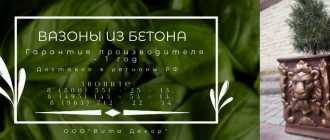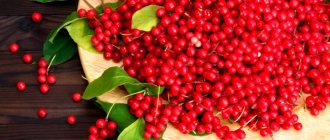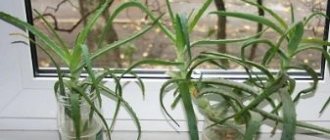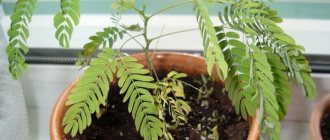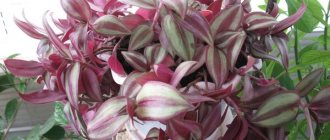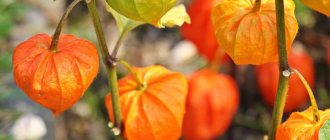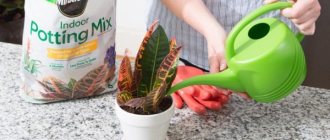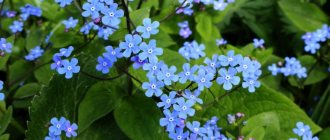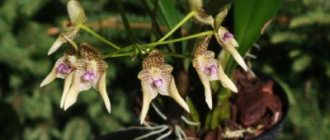Description
The genus Schisandra from the Schisandra family has long been the subject of scientific debate.
Disputes about the number of species included in it lasted more than two centuries. Scientists came to a consensus only in the 21st century, and now the genus includes 25 plant species. Schisandra are evergreen and deciduous vines that, with one exception, grow in eastern Asia at altitudes from 0 to 3000 m above sea level. Only Schisandra glabra liked the southeastern territories of North America. It is noteworthy that it became the type species of the genus and, unfortunately, is now in danger of extinction.
IN THE PHOTO: Smooth lemongrass.
Lianas require support, the role of which goes to neighboring trees, bushes and even rocks. The thin trunk gradually becomes lignified, reaching a height of more than 10 m. The glossy bark of young plants becomes covered with cracks with age.
Petiolate alternate leaves are oval or oblong-lanceolate in outline.
IN THE PHOTO: Leaf blades of Schisandra have a wedge-shaped base, solid or jagged edges, the front surface is bare, the underside is slightly pubescent.
At the end of spring the vines bloom. Within each species there are plants with only female or only male flowers. There are often specimens on which flowers of both sexes are formed. It happens that female flowers appear on a vine one year, and exclusively male flowers the next season.
IN THE PHOTO: Small waxy Schisandra flowers are single or collected in bunches.
After pollination, the receptacle of the female flowers enlarges, and a fruit cluster of bright red berries with one, rarely two, seeds is formed. In cooking, jams and soft drinks are prepared from them, and the bark and leaves are added to tea. The fruits do not fall off for a long time, often remaining on the vine until cold weather arrives and snow falls.
All types of Schisandra have nothing to do with citrus fruits. At the same time, the bark, flowers, and especially the leaves emit a lemon aroma when rubbed. It is because of this feature that the plant received its Russian name.
Popular types
Schisandra chinensis (Schisandra chinensis)
The most common species in culture. The frost-resistant and unpretentious deciduous vine is grown all over the world as a fruit, ornamental and medicinal plant.
IN THE PHOTO: Schisandra chinensis bark contains aromatic essential oil used in perfume production. Photo by: @myhomeworld1.
Henry's lemongrass ( Schisandra Henryi )
This species is native to the highlands of China. The height of the plant rarely exceeds 6 m. The ellipsoidal leaves with jagged edges are dark green.
IN THE PHOTO: Small flowers of Schisandra Henry of a soft yellow hue.
Red-flowered lemongrass (Schisandra rubriflora)
The distinctive feature of this species is indicated by its name. Small flowers, atypical for the genus, hang on long stalks. Grows well in light to heavy soils.
IN THE PHOTO: Red-flowered lemongrass.
Most often, vines are dioecious, so to obtain a harvest it is necessary to plant female and male specimens.
Growing
To grow Schisandra, 2–3-year-old seedlings are usually purchased. By this age, they already have a well-developed root system, and the plants themselves are ready to actively grow the above-ground part.
The best time for planting in the middle zone is mid-spring; in the southern regions you can postpone the procedure to October. Planting holes with a depth and a diameter of 50 cm are located a meter from each other. A layer of crushed stone or broken brick should be laid at the bottom. Compost and superphosphate are added to the excavated soil. The seedlings are placed in the hole so that the root collar protrudes above the surface. The soil is compacted, watered abundantly, and the tree trunk circle is mulched with peat or humus. For further growth, plants will need supports. Trellis can be installed immediately or after a year, replacing them with pegs for the first time.
IN THE PHOTO: Lemongrass is great for vertical gardening of walls, arches, and gazebos.
For reproduction you can use:
Green cuttings. In summer, young shoots are cut into segments with 3-4 buds. The lower cut should be oblique, the upper cut should be straight. The cuttings are placed in water and planted in a cold greenhouse, deepening the lower bud. The planting is covered with non-woven material, which is removed at the end of summer. In the fall, they dig it up and store it together with a lump of earth in a cold basement in damp sawdust.
Layerings. In the spring, before the buds open, young shoots are bent, secured to the ground and sprinkled. The top should remain free. After a year, the cuttings can be separated and planted in a designated area.
Rhizome segments. After carefully removing the soil, cut off roots at least 5 cm long with several buds. They are planted in a cold greenhouse and covered with soil. The planting is watered daily. Replant next spring.
The main disadvantage of vegetative propagation is the risk of getting a plant with only male flowers. It will not bear fruit, although it will delight you with dense foliage and flowering.
Propagation by seeds is considered the most reliable . The juice from the ripe berries is squeezed out, the seeds are washed and dried well. They can be sown in the fall, deepening them to 2 cm. For spring sowing, the seeds are first ripened, then kept in damp sand for about a month at a temperature of +18°C. Then they are moved to a cold place with zero temperature for another 30 days. The next stage is keeping it at +8°C until the sand completely thaws.
Problems
Schisandra chinensis is very resistant to disease and rarely gets sick unless the rules of care are violated or the seed materials are contaminated. There is also a danger of bringing plants with pathogens from the taiga.
Main problems and methods to combat them:
When leaves become spotted, they wither and fall off. A brown edge, spots, and black dots appear. Affected leaves are burned and sprayed with Bordeaux mixture (1%).
With phyllostictosis of leaves, very large black spots and a purple edge appear. Leaves become full of holes. Treatment is the same as for spotting.
With ascochyta blight, dark brown spots appear on the leaves. Treatment is the same as for spotting.
With ramularia, brown single spots with a pink coating in the middle appear on the leaves in wet weather. Treatment is the same as for spotting.
With fusarium, young seedlings are more likely to suffer. Rot appears on the roots and root collar. The stems darken and become thinner, the leaves turn yellow and fall off, and the vine dies. The infection is introduced with seeds. Prevention: buy seeds from trusted places. Before sowing, the soil is treated with Trichodermin, the seeds are treated with fungicidal agents. Young plants are initially sprayed with a weak solution of potassium permanganate.
Plant diseases are very difficult to treat and often lead to death, so it is important to carry out prevention. If a disease is detected, it is better not to use pesticides, because all parts of lemongrass are used for food.
Preventive measures:
- Select quality seeds and treat them against diseases.
- Plant in partial shade.
- Create a drainage layer in the holes.
- Loosen, remove weeds, mulch, water without stagnant water, and feed in a timely manner.
Secrets of success
It is best to allocate a place for Schisandra that is protected from the wind. When growing, it must be taken into account that young plants are shade-tolerant and need protection from direct sunlight. As the vine grows older, its need for sunlight increases.
The soil around the plant should never dry out completely. In addition to watering, spraying with heated water may be required in hot summers.
For full development, Schisandra needs feeding. In April, 20 g of saltpeter is added to the tree trunk zone of 3-year-old plants and mulched with humus. In the summer months, feed with a solution of chicken manure (1:20) or mullein (1:10). After leaf fall, each plant will need 20 g of superphosphate for successful wintering.
When the plants reach the age of fruiting, they are fed with nitrophoska in the spring, organic fertilizers after flowering, and in the fall with superphosphate and potassium sulfate .
2-3 years after planting, Schisandra must be pruned, leaving the strongest shoots. In the future, damaged, inward growing and unproductive branches should be removed. It is better to prune in the fall, after leaf fall. In exceptional cases, summer pruning is acceptable.
Schisandra is practically not attacked by pests. The citrus smell repels insects both from the plants themselves and from neighboring crops.
The harvest is harvested when the berries become transparent. They are removed with brushes along with the stalks, being careful not to crush the seeds. Processing should not be delayed; fresh fruits quickly become moldy and rot. For drying, the berries are kept under a canopy for 2–3 days, and then placed in a dryer or oven at a temperature of +60°C. Dried fruits are stored in closed containers.
How to feed lemon?
Lemon can bloom and bear fruit in the 2-3rd year. Caring for indoor lemon is:
- timely watering;
- regular spraying;
- competent feeding.
Once a month, after watering, add a dose of nitrogen fertilizer dissolved in water (urea or ammonium nitrate - 2 g per 1 liter of water) into the soil. This is especially true for soil poor in organic matter. Nitrogen gives strength to plants; during spring and summer, a powerful leaf apparatus is formed, with which the tree safely endures all the hardships of winter. You can water with diluted slurry of low concentration (1:30).
Under no circumstances should you fertilize with microelements. Unlike other plants, lemons do not have hairs on their roots. Their role is played by mycorrhizal fungi. They seem to stick to the roots of the lemon, and through them the whole plant is fed. Mycorrhizae themselves feed on organic matter, for example, humus. They decompose it, forming valuable substances, which they first feed on themselves, and then feed the lemon. Trace elements kill mycorrhiza, thus the tree is depleted and will soon die. Excessive nitrogen feeding is not good for lemons. The tree can grow with a powerful crown to the detriment of fruiting.
Starting from the second year, in addition to nitrogen, phosphorus and potassium must be used. Superphosphate can be sprinkled on top of the soil and it will slowly but surely feed the plant. Phosphorus promotes abundant flowering and fruiting. The flowering period of the lemon tree is spring, autumn. Single buds appear throughout the year. Fruiting period: after flowering, a fruit is formed that will grow and gain strength for 9 months. This can happen at any time. After harvesting in the spring, it is necessary to feed with urea (or saltpeter) and superphosphate. If the crop is harvested in the fall, you cannot feed it, since the plant goes dormant and excess nutrition will only weaken it. Postpone fertilizing to February.
Possible difficulties
Whitish coating on foliage.
Cause: powdery mildew.
Premature falling of leaves, softening of the stem.
Drying of shoots.
Reason: pruning during the period of active sap flow.
Bitter taste of fruits.
Cause: seeds crushed during harvesting.
Reduced yield.
Reason: thickened crown.
Subscribe and receive descriptions of new species and varieties in the “fruit trees and shrubs” section by email!
Almost everyone knows the tonic tincture of lemongrass, which is sold in pharmacies. Not everyone knows what kind of plant this is, what it looks like, how it grows and how it blooms, but it is a beautiful climbing shrub that can decorate the space near the house. In addition, you can eat lemongrass 2-3 berries a day if there are no contraindications. Schisandra chinensis is not a tree or a herb, but a shrubby vine that requires any support.
Schisandra blooms
Pharmacy drugs
First of all, the pharmacy will offer a tincture of lemongrass seeds. The seeds contain schisandrin, which stimulates the nervous system, increases performance, and has a positive effect on the cardiovascular and respiratory systems. The tincture is drunk as an expectorant. To prevent influenza and viral diseases, take 15 drops diluted in a small amount of water, morning and afternoon, for a month. Drinking the tincture in the evening can lead to overexcitation and insomnia. After a two-week break, if necessary, the doctor will prescribe a new course of treatment.
Pharmacies offer a wide variety of teas. They contain collections of herbs that complement or enhance the effect of Schisandra chinensis. Drink like regular tea, but no more than two cups a day.
Schisandra chinensis - description
Chinese lemongrass or Schisandra Schinensis is a perennial deciduous vine of the Schisndraceae family, up to 8-10 meters high, with branched stems. Leaves are 5-10 cm long, elliptical or obovate, jagged at the edges, pointed at the apex, shiny above, green, bluish below on reddish petioles 1.5-3 cm long. The flowers are fragrant, dioecious with a white or pinkish corolla-shaped pericarp, bloom in May-June. When the fruits ripen, the receptacle lengthens and becomes in the form of a brush with closely seated round red berries, which ripen in August-September. The seeds are kidney-shaped.
Ripe lemongrass berries
Wild lemongrass grows in the Far East, Primorye, in the forests of the Ussuri region, in northeastern China, Korea, and Japan.
The Chinese (Far Eastern) Schisandra vine is used in landscaping to decorate tall tree trunks in parks and forest parks, and to decorate walls, gazebos, and pergolas. In addition to natural places of growth, it grows well in the western and central parts of the steppe and forest-steppe zones of the European part of Russia, and in the shade in damp places and in the steppe zone; in the forest zone of the Northern Crimea and the Northern Caucasus, in the forest-steppe zone of western Siberia, in humid places in the mountainous regions of Central Asia.
Green lemongrass berries
When and how to collect lemongrass fruits
The berries of the Chinese plant ripen en masse in September, and at this time it is necessary to collect raw materials for preparations. One brush usually contains at least 20 useful berries, or even more, so you can pick them up in fairly large volumes.
Only fully ripe, red fruits need to be picked from the branches; you can return to unripe ones a little later, when they gain ripeness. The ideal weather for collecting is considered to be the first half of a dry and sunny day. It is very important to choose an ecologically clean area for harvesting fruits - the properties of berries that have managed to absorb chemical waste will not bring health benefits, but only harm.
Advice! Since the berries of the Chinese plant are not stored fresh, the time for collection must be chosen in such a way as to be able to immediately begin further processing of the raw material.
Schisandra chinensis (Far Eastern) – medicinal properties and contraindications
Schisandra berries have a pleasant lemon taste and smell; The stems, flowers and leaves, when crushed, also release an aroma similar to that of lemon.
The fruits, seeds and bark of lemongrass are considered medicinal raw materials. The bark is harvested in the spring, and the fruits and seeds in the fall. The powerful stimulating and tonic effect of lemongrass has been known since ancient times.
Before taking lemongrass tincture or its fruits, people suffering from hypertension, heart disease, insomnia, and increased excitability should consult a doctor! If a skin rash appears, you should stop taking lemongrass.
What does Far Eastern Schisandra look like, what family does it belong to:
The plant is a deciduous vine that reaches a length of 15 m and has a trunk with a diameter of 2.5 cm. The culture belongs to the Limonnikov family. It is often called Chinese lemongrass. The shoots and leaves of the flower have a pronounced lemon aroma. That is why the culture got its name.
Schisandra has a number of beneficial properties
Common varieties
When growing lemongrass at home, the following varieties are usually chosen for this:
- Firstborn. This variety is characterized by high resistance to frost, fungi and parasites. The plant has cylindrical fruits that reach 7 mm in diameter. The juicy pulp has a sour taste. When pressing on the fruit, juice is released.
- Garden 1. This is a fast-growing vine that can produce a large harvest. Its fruits have a distinct aroma.
Important! When growing lemongrass indoors, you need to systematically prune. This will help prevent the crop from growing too large.
Medicinal properties and history of use
The roots and stems of lemongrass contain many valuable components that bring great health benefits.
Since ancient times, people have known that the plant gives the body strength and helps cope with fatigue. In China, lemongrass has been used for medicinal purposes for about 2000 years. In the Khabarovsk Territory, the juice of the crop has been produced for human consumption since 1967.
The plant has healing properties and helps achieve the following effects:
- reduce blood sugar parameters;
- cope with high cholesterol;
- improve the condition of cancer;
- dilate peripheral vessels.
The use of home remedies must be combined with medications. You should definitely consult your doctor first.
Important! Traditional recipes have many contraindications and can cause harm.
Schisandra chinensis (Far Eastern) - propagation, cultivation, planting and care in the middle zone
How to grow Schisandra chinensis? The Chinese (Far Eastern) Schisandra liana is shade-tolerant, quite winter-hardy, and in the central zone of the European part of Russia it is quite frost-resistant. In the first years it grows slowly, in subsequent years it grows quite quickly. Does not require shelter for the winter.
How to plant lemongrass? Planting 2-3-year-old lemongrass in the Moscow region does not cause any difficulties. It is little demanding of soil fertility, although it prefers moist, fresh, well-drained soil. It is better to place it in partial shade (especially in the southern regions). Young plants planted in an open area must be shaded from the sun, but adult plants (over three years old) are not afraid of the sun and bear fruit well both in the sun and in the shade.
Since lemongrass is frost-resistant, it is possible to grow it even in the Leningrad region without shelter for the winter; there it grows up to 4 meters, although the shoots often freeze slightly. If the winter has little snow, the roots must be covered.
Schisandra berries are ripening
How does Schisandra chinensis propagate? Schisandra propagates by seeds, root suckers, layering and green cuttings. Seeds are sown scattered on loosened soil in the fall, covered with a rake and covered with leaves. In the spring they get healthy shoots, pull out the weeds, thin out if necessary.
How to transplant lemongrass to a new place? When transplanting adult plants, it is recommended to bury the entire vine, covering it with earth or sand. When the plant takes root, the above-ground part of the vine is lifted and tied to a support. If roots have formed in the internodes of the aboveground part, they are cut off or the plant is divided into parts with roots, planted in new places.
Schisandra has tied berries
Caring for lemongrass involves watering, weeding and mulching with leaves, compost or any other mulching materials.
Schisandra chinensis is an excellent plant for the garden and for growing in a personal plot near a private house. My lemongrass has been growing near the porch for more than twenty years, it has grown greatly, and it already needs a new support in the form of a pergola along which the young shoots will curl.
All the photos of lemongrass in this article were taken on my site in different years.
Schisandra attracts insects
You can also read articles on the site about trees, shrubs, herbs and flowers that can be used to improve the health of the body by clicking on the photo in the slider below.
How to care for lemon
Caring for the southern guest includes the usual set for any cultivated plant - light requirements, watering, replanting, fertilizing and treatment. Since lemon is a tree that grows indoors, it is necessary to trim off excess branches and form a crown.
Lighting and temperature
Lemon is a southern plant that loves brightness, but young trees do not tolerate direct sun. They need to be shaded or placed on the east window. In order for the crown to form beautifully and harmoniously, the plant must be turned to the light in different directions. An adult tree tolerates heat well. In the summer it is useful to place the pot with the plant on the loggia, in the fresh air, and in the winter to illuminate it with a phytolamp. Lack of lighting negatively affects the plant as a whole - the leaves lose their rich color and the fruits become sour.
The air temperature near the tree should be within certain limits depending on the stage of life of the lemon:
- during the period of active growth and flowering – 17°C. If this threshold is exceeded, the buds will fall off. You can take the pot out onto the balcony;
- with the beginning of fruiting – 20°C;
- rest period – 14-17°C.
Changes and non-compliance with temperature conditions are fraught with illness.
Humidity and watering
The young plant does not like dry air, so it needs to be watered and sprayed in a timely manner. Overmoistening is unacceptable. Winter watering should not be frequent; it is enough to water the soil once a week with settled melted snow or just warm boiled water, preferably acidified. Between waterings, the soil should dry out by about one centimeter, but no more, otherwise the lemon will begin to dry out. For better water absorption, the soil must be carefully loosened, and to prevent it from hardening, mulch can be placed on top. In summer it is hot and bright on the windowsill, so the soil dries out quickly and the leaves become dehydrated. Starting from March, watering is required up to 3 times a week, but not abundantly - the roots may rot. A trickle of water should go along the perimeter of the pot, and not under the root.
Growing and caring for lemons should take place in conditions of high humidity (60-70°C). To do this, you can place a bowl of water on the windowsill, but it is better to buy a special humidifier. For this subtropical plant, moist air is more important than watered roots.
It is necessary to spray the foliage with warm water from a spray bottle. In winter, the air in the apartments is very dry due to central heating, and in summer the hot sun shines through the windows. To avoid sunburn, spraying should be done in the morning or evening so that the leaves have time to dry before the sun hits the window. It is very useful to give your lemon a spa treatment under a warm shower once a week. To avoid flooding the soil, it must be protected with film.
House plant lemongrass: description and photo
Schisandra can often be found as a shrub form used for fencing a personal plot.
External features that can be seen in almost any photo on the Internet include:
The garden form tolerates frost well. The year of fruiting alternates with a year of absence of berries, which are widely used in medicine.
At what age can lemongrass be given to children?
The beneficial components in the berries of the plant will have a positive effect on the child’s body, but only if consumed correctly. Chinese lemongrass can be offered to a child for the first time after 12 years of age; before this time, the properties of the product will most likely cause harm to health.
In addition, the first dosages of berries should be very small to avoid harm - a few fruits at a time.
Attention! Since Chinese lemongrass is a potentially dangerous and allergenic product that can cause harm to the body, you should consult a doctor before introducing the berries into your child’s diet.
Types of lemongrass
In total, modern botany numbers from fourteen to twenty-five species.
However, two types of lemongrass are most often used:
- Chinese, or Far Eastern, is a perennial tree-like vine that can grow up to 15 m in length. The bark of a young vine has a yellow tint, which changes to brown with age. The root is cord-shaped, with a large number of subordinate appendages. Traditionally, lemongrass can be seen in the Far East, along the rivers of the Amur and Sakhalin regions;
- Crimean, or ironweed, is an endemic species that can be found exclusively on the territory of the Crimean peninsula. Prefers warm, sunny slopes of rocky steppe areas and is found on limestone outcrops. Externally it is distinguished by elongated leaves that can grow up to 3 cm in length. It has a memorable lemon aroma, which is why its leaves are often used as tea infuser.
Pests
Pests are not interested in lemongrass because of its specific aroma. The only pest is the mealybug, which causes the disease powdery mildew. With powdery mildew, lemongrass leaves become covered with a white coating, then black dots and fall off. All parts of the plant die.
The cause of the disease is poor care and excess moisture in the soil. As soon as such signs appear, the plant is treated once every 10 days with a solution of ground sulfur and soda ash until it is cured. It is recommended to treat pests and diseases with 1% Bordeaux mixture in the spring, and with Baikal-EM1 and Topaz in the summer.
Decorative indoor lemongrass - planting and care
The decorative form is unpretentious. It easily takes root in a new place after planting.
The basic landing rules include:
- Correct selection of container - the pot must have drainage holes. The size of the container should only be slightly larger than the size of the root;
- Before planting, be sure to pour a small amount of pebbles onto the bottom;
- Garden soil is not the best option for planting; it is recommended to purchase a special soil mixture;
- After the plant is planted, it should be watered abundantly and placed in a shaded, draft-free place.
- In order for the plant to take root well, it is important to follow the rules of care: systematically loosen the soil, be sure to spray it in the hot season, and make sure that the soil does not dry out during the first month.
Let's watch a video about growing lemongrass:
Transfer
The first can be done after purchasing a young seedling in a pot, but first it must be quarantined for a week away from other plants. During this time, you will make sure that the lemon is healthy and not infected with spider mites. When deciding whether a transplant is needed, inspect the soil to see if the roots are visible, if they are sticking out of the drainage hole, if the pot is visually small. If the issue of replanting is resolved positively, wet the soil, tilt the pot and, holding it by the stem, very carefully pull out the plant with a lump of earth. Inspect the lump - the roots should not stick out from it. If it smells rotten, carefully loosen the root system above the basin. You can put it in warm water and clean it from the earth.
Examine the roots, remove bad, blackened, rotten ones. Pour drainage into a slightly larger pot, then fill the soil mixture up to half, place the plant upright, spread out the roots and fill with soil, not reaching a couple of centimeters to the top. Water and place in partial shade without drafts, let the plant come to its senses and get used to the new place.
For the first 2-3 weeks after transplantation, keep it under a plastic bag with “ventilation” and gradually accustom it to air. If you place a seedling without covering it, it may die. Keep it away from sunlight to avoid sunburn. After the plant has become a little stronger and accustomed to the air, remove the plastic cover. Watering can already be combined with fertilizing.
Methods for propagating indoor lemongrass
| From seeds | It is best to sow before winter, or at least in spring. To do this, it is recommended to prepare a seedling soil mixture in advance, into which the seeds are planted to a depth of 0.5 cm. Cover the top with paper and water daily. The first shoots should be expected in the second week. It is important to provide seedlings with protection from direct sunlight and treat them several times with a light solution of potassium permanganate. After the formation of the third leaf, you can transplant the seedlings into a new container. |
| From cuttings | The top parts of young stems are best suited; it is recommended to cut them in mid-summer. It is recommended to place the cut cuttings in a growth stimulator (Kornevin) to activate root growth. After a few days, the cuttings are planted in pre-moistened sand, covered with film or cut bottles |
| From root suckers | For this purpose, offspring that are as distant as possible from the mother plant are suitable. They are dug up and planted in pre-prepared containers with soil mixture. At the same time, it is important to do everything as quickly as possible; under no circumstances should the offspring be stored in the air for a long time, this can negatively affect the condition of the root system and lead to its death. During the first month, young seedlings need abundant watering and protection from direct sunlight, which can dry out the soil and leaves. |
When preparing a soil mixture for planting seedlings, it is important to consider that ordinary garden soil is not suitable for this plant.
Since its homeland is a different climate zone with appropriate soils, it is better to purchase a special substrate that will best suit the needs of Schisandra.
Lemon care at home
Location: The plant tolerates sunlight quite well, but starting in spring, it is necessary to gradually accustom it to it. During the hot period, especially at lunchtime, it is necessary to shade the indoor lemon. Like most citrus plants, they are extremely sensitive to sudden changes in light and frequent changes in environment; leaves and flowers begin to fall off.
In winter, artificial lighting can be used to extend daylight hours by 10-12 hours. It is better to choose windows facing east or west, where there is no afternoon sun. Shade-tolerant varieties can also grow on the north side.
Exposure to direct sunlight burns the leaves and causes brown spots to appear on the surface. It is necessary to regularly ventilate the room, but indoor lemon is especially afraid of drafts.
Temperature: When it reaches 12-14 degrees, the tree can be taken out into the open. In the spring, the flowering process begins and temperatures above 20 degrees lead to color loss. But in early spring, beware of low temperatures and frost at night. Cover the bush with gauze, or take it indoors. With the onset of autumn and cold weather, when the temperature drops to 10-12 degrees, the tree is taken into the apartment, but it also needs to be accustomed to warmth gradually. Optimal wintering indicators are 14-16 degrees. This mode will ensure optimal ripening of the fruits and protect the leaves.
Humidity: Low humidity is very detrimental to the plant, especially during the heating season, where in addition, the temperature can reach over 22-25 degrees. It is necessary to moisten or spray the leaves with warm, settled or soft water 2-3 times a day, and also place the pot on a tray with moistened expanded clay.
